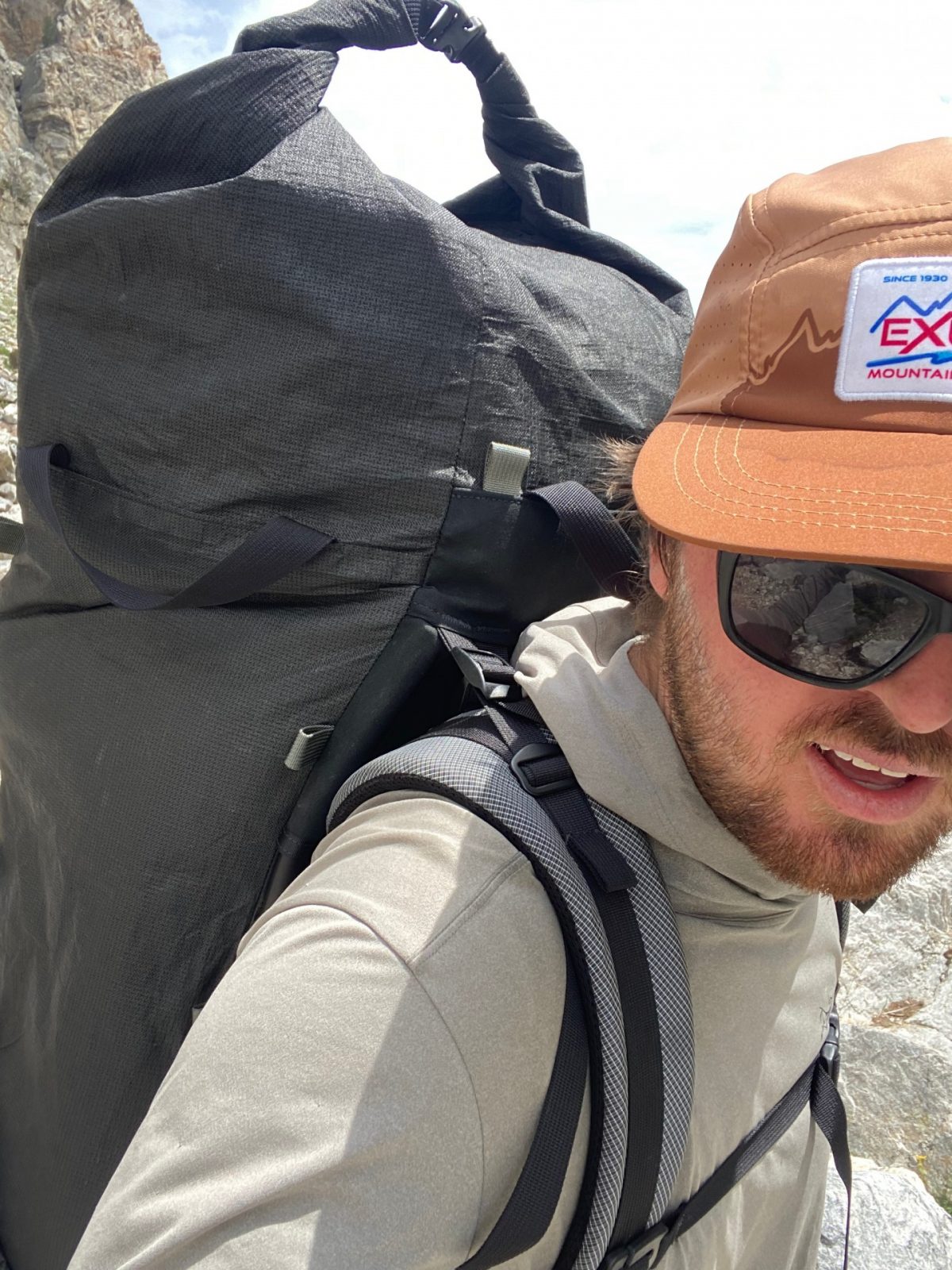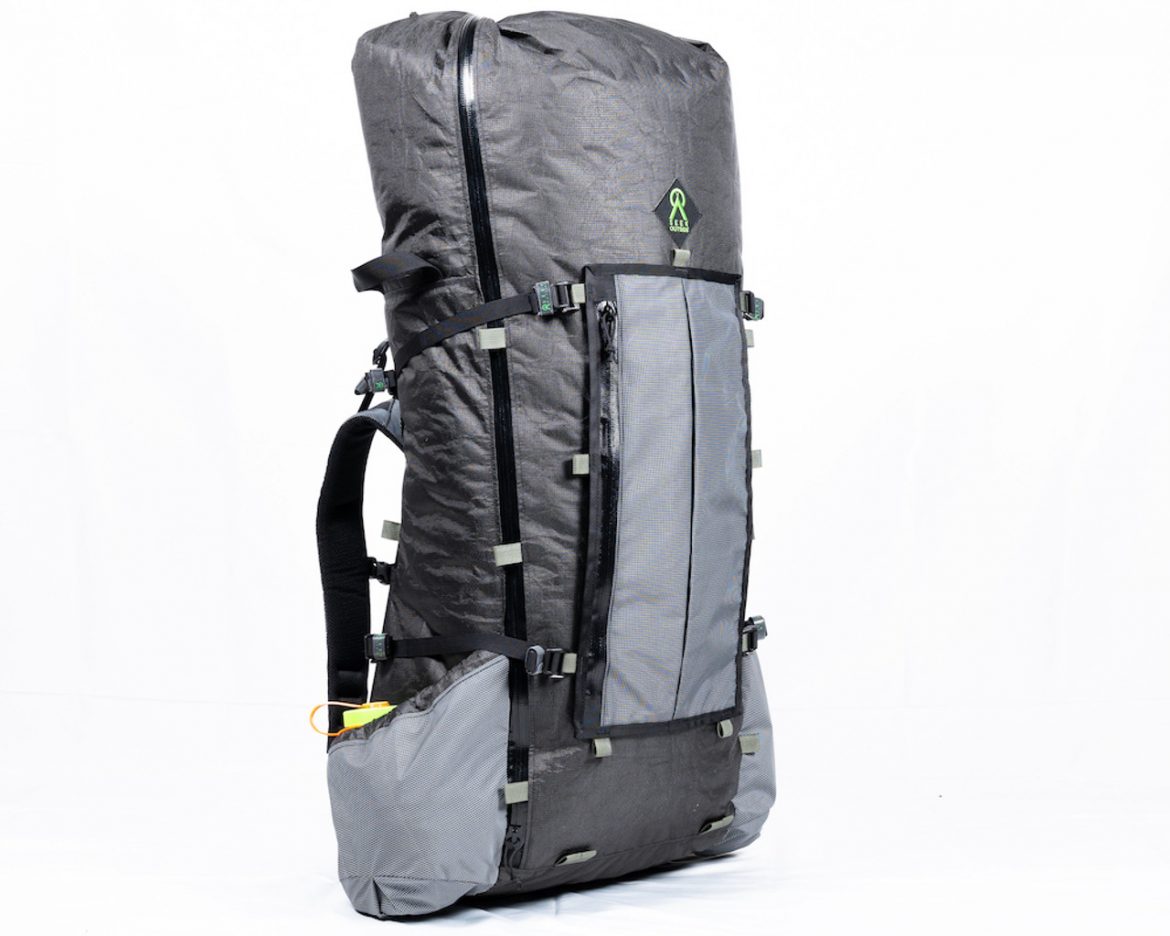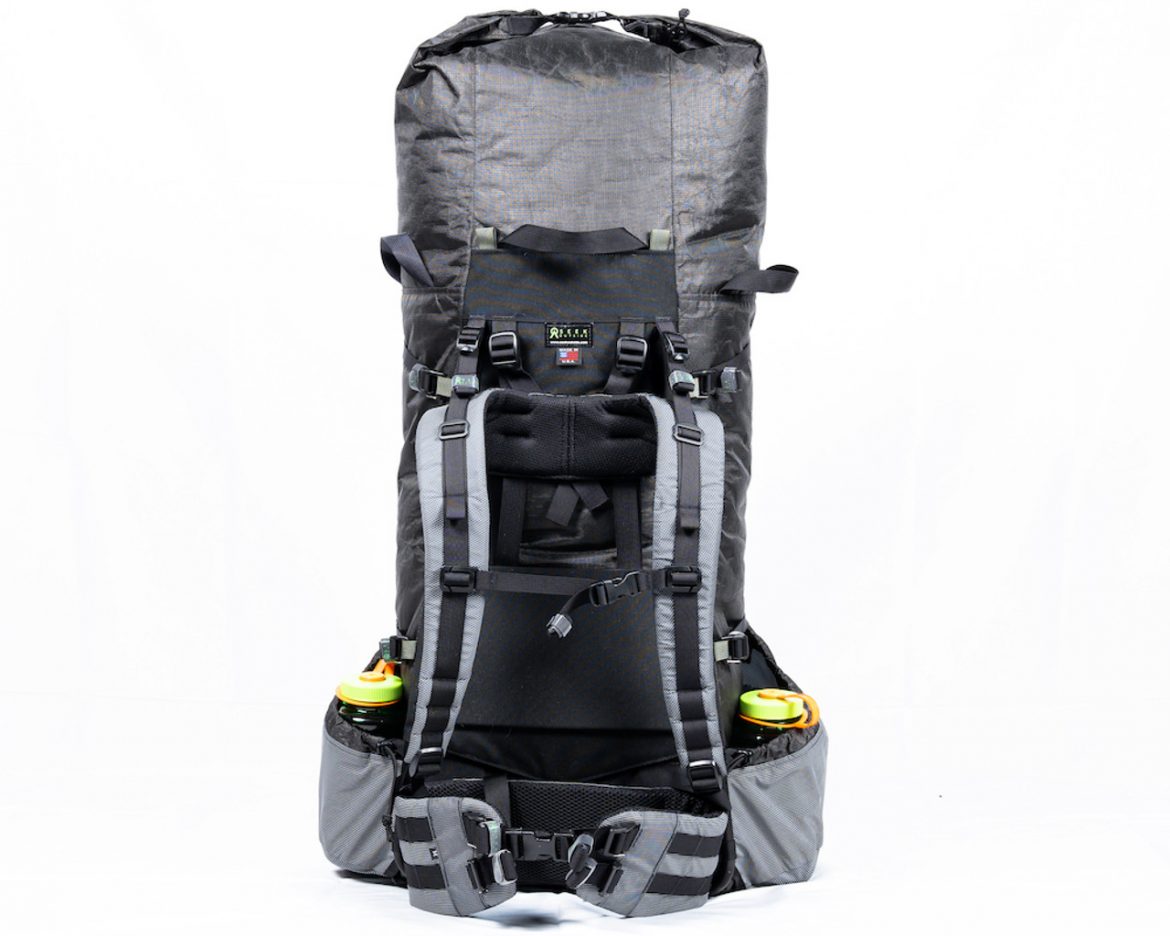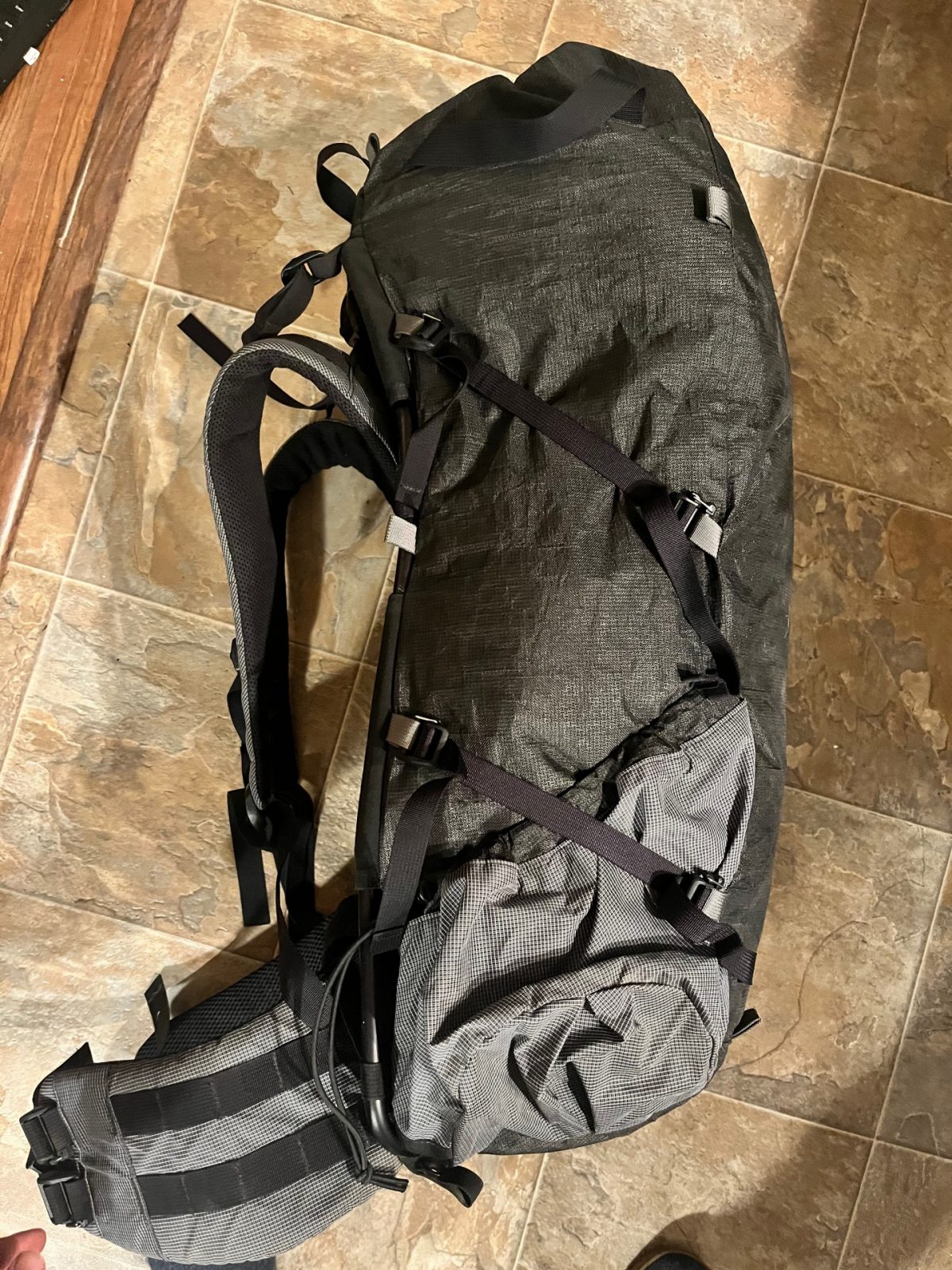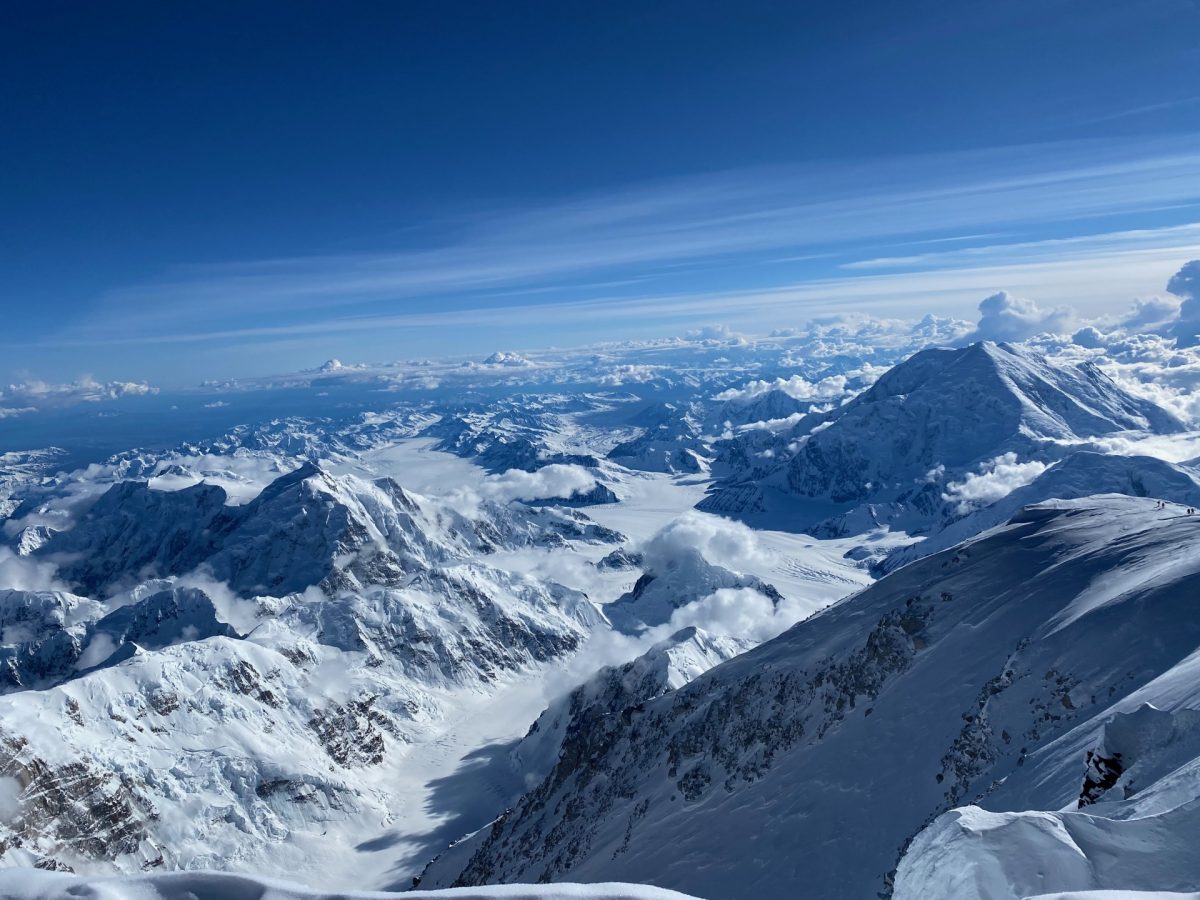
Plans to ascend Denali via the West Buttress requires fitness, strength, patience, and a solid pack to haul loads. Seek Outside’s Unaweep 6300 Ultralight Backpack is big-load-worthy.
Climbing or skiing Denali is a goal for many. Another goal is finding the right pack to haul a hundred pounds or more up the biggest hill in North America. No matter how real the struggle is, the Seek Outside Unaweep 6300 has a feature set to make the load carrying more comfortable and efficient.
The Pack Search
As a gear aficionado, pack maker, and Denali guide, I often field questions about whether I make my own packs for Denali. My answer: hell no. There are a multitude of reasons I’m generally uninterested in building 100-liter backpacks, among them being the intricate complexities of heavy load pack suspension, the unique circumstances in which one would need a 100L pack, and, my favorite answer, “I only make packs people enjoy carrying, and no one enjoys carrying a 100L pack”.
Folks who know me also won’t be surprised to know that I am not a person who “goes with the flow” gear-wise. It would break my heart to send my hard-earned money (from my own pack-making exploits) to Mountain Hardwear, Osprey, The North Face, or any of the other large factory produced, and in my opinion, quite mediocre big expedition packs on the market today.
My search for the perfect Denali pack took me down a few rabbit holes, with some quality reading on the Backpacking Light forums (https://backpackinglight.com/forums/topic/down-the-evazote-rabbit-hole-and-other-load-hauler-pack-questions/). All this research led me to the Seek Outside Unaweep. I’m sure many of you are thinking of Hyperlite Mountain Gear right now, and their Porter 5400 is a valid option that has been successfully used by many previous Wildsnow bloggers.
After some reading on pack suspension, though, it’s apparent that the suspension on the Hyperlite packs is quite lacking in the context of heavy load hauling. There is a good argument for a one-pack system with a Hyperlite pack for skiers or climbers that plan to haul loads on the lower mountain with a big pack, then slim down the same pack for a ski descent or more technical climb. Like previous bloggers (link to Gary Smith Denali post), I have utilized and enjoyed a two-pack system – the first of which prioritizes load-hauling comfort on the lower mountain—the second being my trusty (I’m biased) Apocalypse Equipment SaC that is super comfortable and practical for ski tours from camp as well as light and small enough to disappear into a duffel on the lower mountain.
What I’m looking for in a Denali Pack
I tested the Unaweep on a guiding trip in May 2022. Despite not skiing on this trip, my pack needs are very similar whether I’m on a ski trip with two packs or a work trip with one load-hauling pack – I’ll focus on the functionality in the ski trip context, this being a ski website after all.
First and foremost, a Denali pack needs to be comfortable. Comfort is no easy feat when the loads are ~70 lbs, and my hips are slim and boney. Of course, comfort is relative in this realm – no one has designed an anti-gravity pack to make carrying 70lbs feel like 10… yet.
The next necessity is size – when it’s cold, and we are trying to pack up camp and get on the trail in the morning, I don’t want to be carefully stuffing and Tetris-ing each piece of my kit so that it all fits in a just-big-enough pack, I want to throw it all in and get on with my day. On a similar note, having some versatility to carry/secure a shovel, probe, picket, wands, and other odds and ends outside the pack is nice. Additionally, strong sled towing attachments, a strong haul loop for a pack tether, and a place for an ice clipper are critical features for traveling on the glacier with big loads.
Durability is a must. In this context, on heavy-load Denali trips, I have often seen packs fail at the seams. And within the suspension system, there isn’t much abrasion to contend with, but the heavy loads require an extremely well-built pack to hold up over time. Lightweight is a plus, but not a top priority if meeting all these other needs. This list of needs and design features is very different from my needs for packs on a technical trip or a day-to-day skiing or climbing pack.
Seek Outside Background
For a company that doesn’t identify as backcountry ski-oriented, Seek Outside makes some seriously desirable gear for many adventurous skiers. The company was founded in 2009, and its first products were large and lightweight tipi/pyramid-style tents. While they continue to make awesome-looking shelters, they have also expanded to make packs and ultralight wood stoves. The tents and wood stoves seem like an amazing luxury on a lower 48 winter overnight, and with their smallest titanium stove coming in under 1 lb and packing flat, not an unreasonable thing to pack! They manufacture everything in-house in Grand Junction, CO, and have a strong following in the hunting, packrafting, and lightweight backpacking worlds.
I first heard about Seek Outside packs while researching and learning about pack suspension in the interest of the packs I make at Apocalypse Equipment (very different beasts). In the hunting, Alaskan backpacking, and general big load-hauling worlds, the Seek Outside suspension system is widely known as one of the best.
Pack Design
For starters, the Unaweep looks different from a hunting pack. I’m down with a little camo at times, but I usually choose black or gray for my personal packs. Beyond color, when I think of a hunting pack, I picture lots of webbing and straps that don’t make any sense to me. Not here – when the pack arrived, it had no straps or webbing in the front/sides/bottom. Just a simple rucksack with webbing loops along the main seams and gargantuan side pockets that could be cinched down flat. Also in the package were a bundle of what Seek Outside calls gatekeeper straps, a talon (essentially a modular front pocket that can be attached to the pack), and some frame extensions (more on these later).
Between all these straps, I can adjust my system every day on the mountain to carry whatever I need on the outside of my pack. Often, I ran two straps on each side as compression straps to hold wands, a picket, ice tool, or a shovel accessible on the side of the pack. Some days, I added straps to the bottom to carry a tent or CMC can on the outside. Then, for summit day, I could strip down and roll down the pack to be more like 50L and minimal outside straps.
I love the versatility and sleek baseline of the Unaweep. The fabric, Challenge Sailcloth Ultra 400, is top-of-the-line. It is the same stuff I choose for many of the packs I make at Apocalypse Equipment, as it is extremely abrasion resistant, lightweight, and waterproof. Additionally, the waterproof laminate and polyester in the face fabric are made from recycled water bottles.
Moving to the pack’s back panel and suspension, things get a little more complex: this is where the real genius of the Unaweep lies. This thing is a load-hauling beast! Seek Outside states, “Our frame will support over 300 lbs in vertical load. YOUR max load will be determined by your body, not by the pack.”
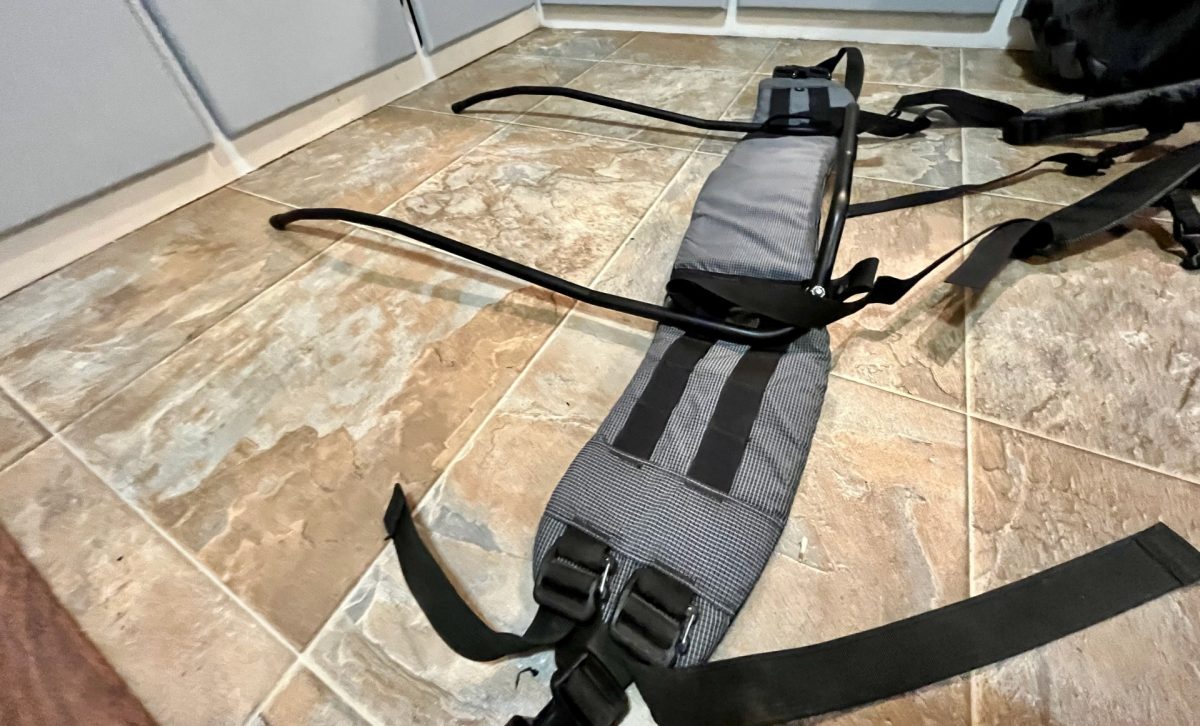
The aluminum frame and attached hip belt. The integrated external frame is made with beefy tubular aluminum in a U-shaped configuration.
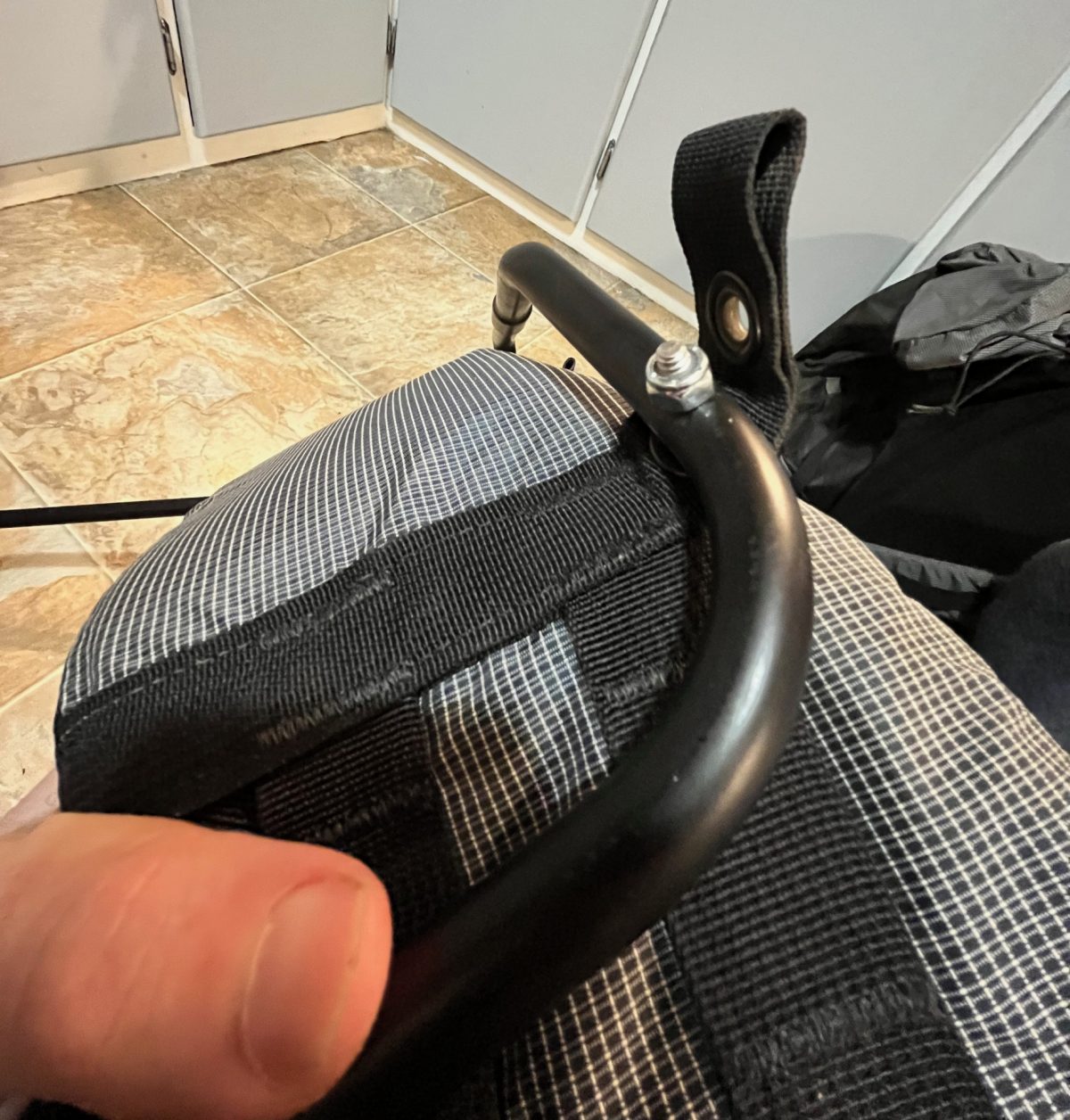
A robust, padded hip belt is bolted directly to the bottom of the frame for maximum efficiency and direct load transfer to the hips.

The hip belt uses a four-way forward pull buckle arrangement allowing you to increase tension on the top to further improve hip belt “grip” on your hips.
The integrated external frame is made with beefy tubular aluminum in a U-shaped configuration. A robust, padded hip belt is bolted directly to the bottom of the frame for maximum efficiency and direct load transfer to the hips. There are a few fit options related to the hip belt, aside from S/M/L sizes — you can add a lumbar pad, which I did to help keep the pack from sliding down my butt. There is also the option to hang the hip belt from the frame, with no top attachment, or to “capture” the hip belt so it remains set in a more standard fashion.
The hip belt uses a four-way forward pull buckle arrangement allowing you to increase tension on the top to further improve hip belt “grip” on your hips. Grip is critical here, and this system, combined with the soft and friction-ey spacer mesh, really stays put.
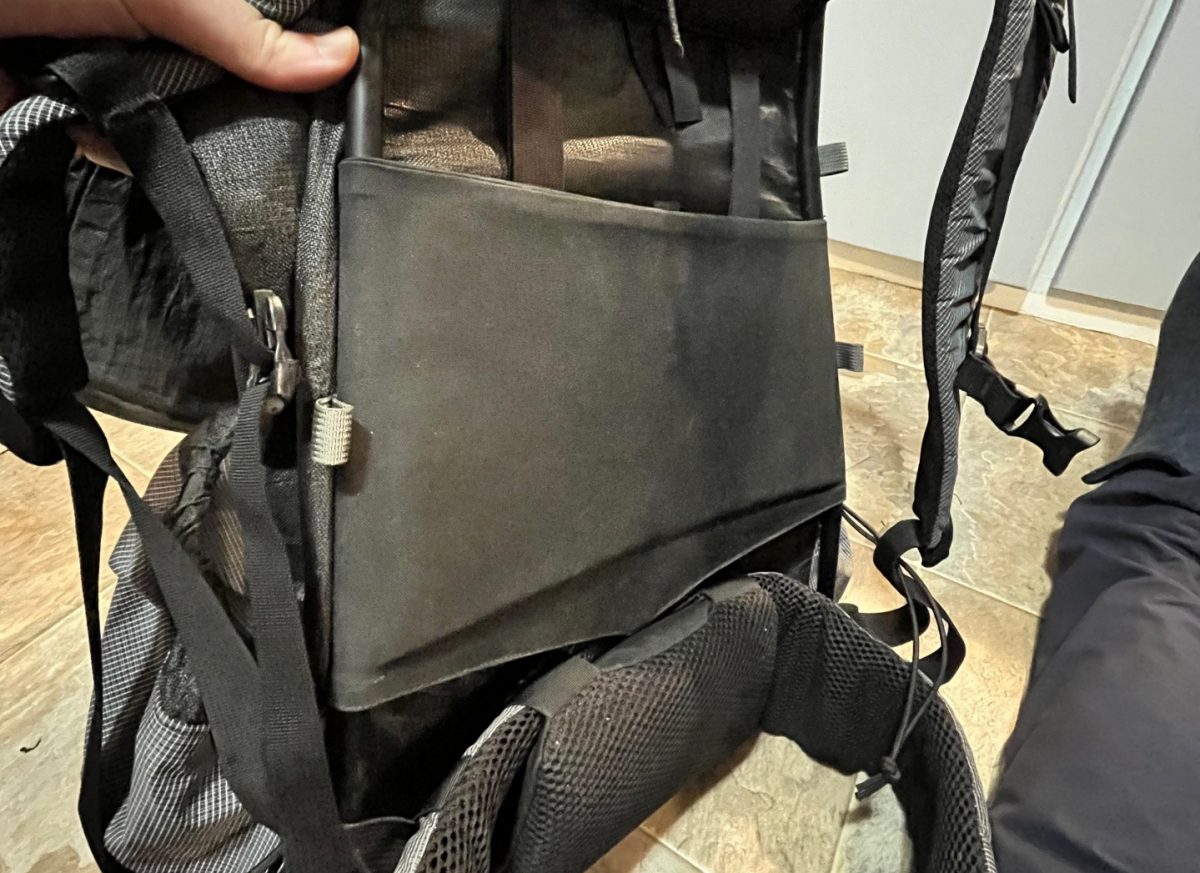
A Cordura “trampoline” holds the frame in place. The trampoline also isolates your back from any pokes and prods from the load inside the pack.
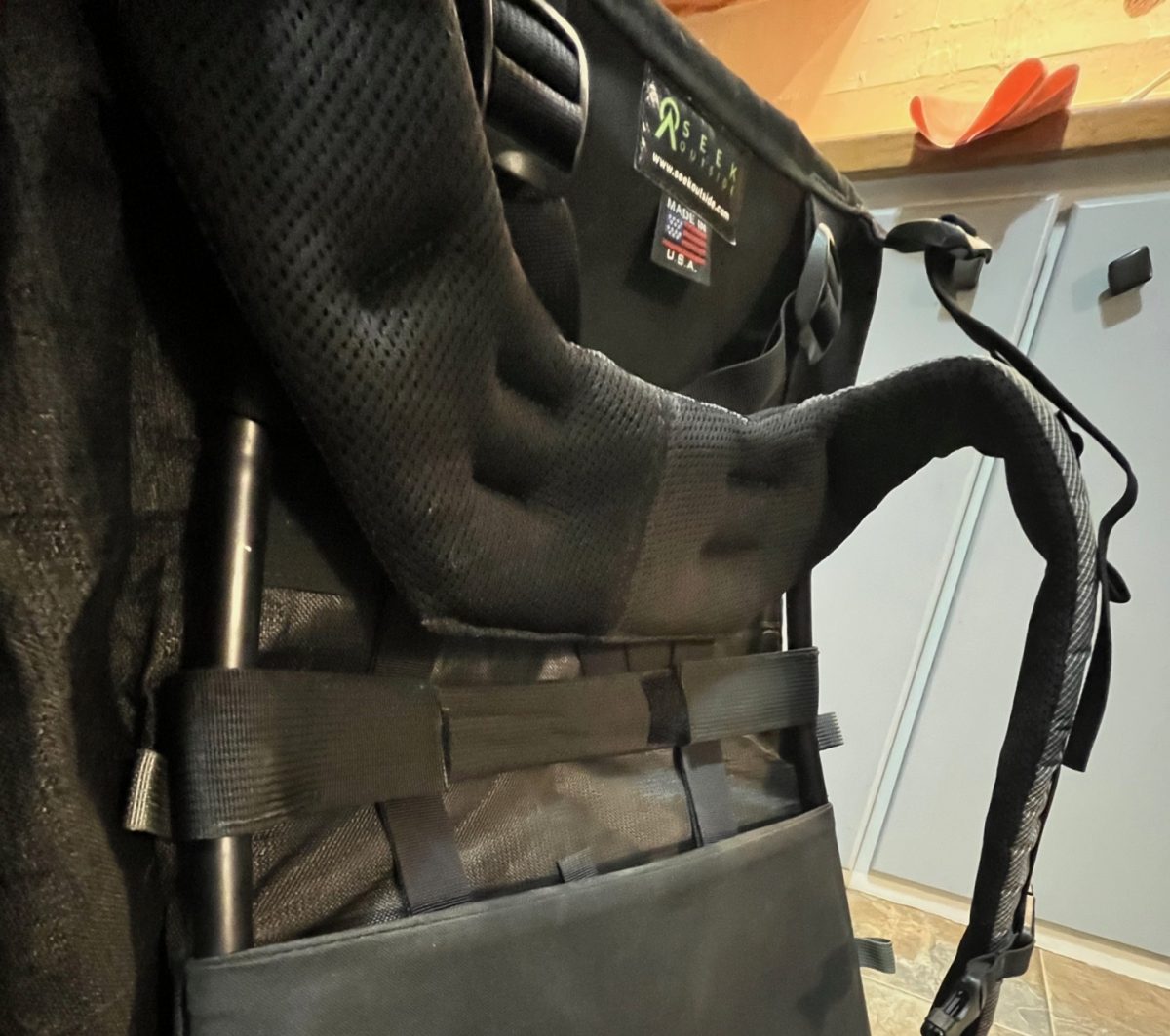
The shoulder straps are on a fully adjustable yolk, allowing attachment adjustment for a perfect fit.
Moving up the back panel, a Cordura “trampoline” holds the frame in place. The trampoline also isolates your back from any pokes and prods from the load inside the pack. Above this, a single horizontal stay prevents barreling and adds additional stiffness to the frame. Next, the shoulder straps are on a fully adjustable yolk, allowing attachment adjustment for a perfect fit. The shoulder straps have beefy and adjustable load lifters connecting directly to the top of the frame, optimizing for load transfer.
Seek Outside has excellent videos on their website explaining the fitment and adjustment of the frame and suspension, so I won’t go too deep here. Basically, the frame height is adjustable with the optional 2″ and 4″ extensions and depends on the user’s torso height and expected loads. With my 19″ torso and medium-heavy expected loads, I ran the 2″ extensions on Denali for a 26″ frame height. A taller pack frame allows the load lifters to provide more upward pull and more efficiently transfer weight to the frame and hip belt.
All of these suspension features may start to sound a little heavy; the adage, “takes weight to carry weight,” comes to mind but does not apply here. The 103L pack comes in at just 3 lbs! Compare this to 7.4 lbs for a Mystery Ranch Terraplane 100, 4.5 lbs for an Osprey Nimsdai 90, or 2.7 lbs for the significantly less robust suspension of the Hyperlite Porter 5400.
Performance in the Field
As a self-proclaimed weight weenie, I spend most of my winter carrying a 10-15 lb total weight pack while skiing day to day.
With this in mind, on day one on Denali, single carrying 120 lbs of gear between a sled and pack is a bit of a beatdown, no matter which pack you choose. I’ve often finished day one with bruised hips, sore shoulders, and generally low morale about the next 20 days of carrying a heavy pack.
The Unaweep was a game changer here – after some minor fiddling with the fit (that I should have taken care of pre-trip), I could transfer the load to my hips effectively, with the plush hip belt hugging and gripping my hips quite comfortably. With my narrow hips and flat butt, I still needed to crank down the hip belt straps fairly tight, though this is more a limitation of my body shape than the pack design. The spacer mesh on the inside of the hip belt and shoulder straps adds friction to help a bit with sliding but comes with the downsides of added abrasion on clothing as well as collecting snow in the open mesh structure. On a more winter expedition specific model, the mesh could be reversed to provide a similar level of cushion but with a less porous face to prevent snow build-up.
Most days, I ended up with a full pack – lots of opportunities to test comfort! For better or worse, the large size and versatility (as well as my assistant guide role) made me a prime candidate to carry bulky, odd items like one-gal fuel cans, CMC buckets, etc. The Unaweep swallowed most of this without issue, and it was awesome to have some extra straps to rig up a CMC can, picket, or random rice bags on the outside of my pack when needed.
On the steeper or more technical sections of the West Buttress, such as Motorcycle/Squirrel Hills, the fixed lines, and 16 ridge, a full pack with tight load lifters moved quite well. It never felt like it had excess movement or swing weight, which can feel very unstable and unsettling, especially while managing clients on a rope team. I find that in this 3rd class or easier technical terrain, having the pack weight close as possible to your back and minimizing swing weight/momentum feels much more important than articulation and freedom of movement – as one would prioritize in 5th class terrain or technical ski descents.
The Unaweep is spot on here – the rigid frame and contoured bag, in combination with effective load lifters, allow you to pull the weight in as close and snug as possible but don’t allow for much in the way of articulation. Something I should have tried, and will next time, is removing the horizontal stay from the back panel. This subtraction would allow the “arms” of the frame to twist more and perhaps open up improved shoulder mobility.
It’s worth noting the tall frame and load lifters lead to tight clearance behind one’s head – especially with a helmet. This was only an issue on our 14k-17k move day; with a maxed-out pack on the fixed lines, looking high above was challenging. The Hyperlight Porter likely wins here, as it lacks load lifters to pull the overhead portion of the pack toward your center of gravity, allowing for more headroom.
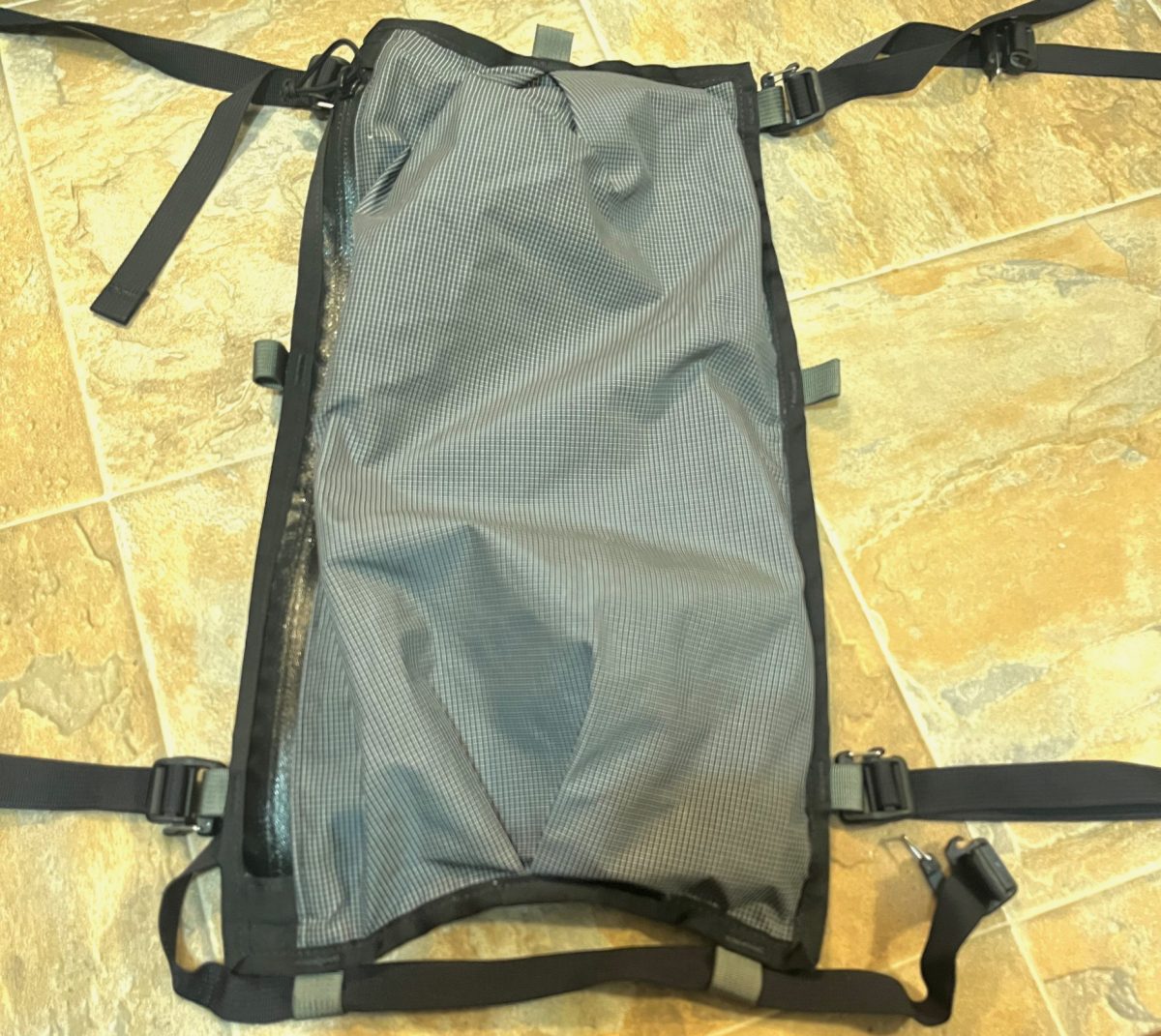
The talon was excellent for compressing and securing awkward loads to the front of the pack and served a similar organizational purpose to a lid – holding snacks, electronics, and toiletries with relatively easy access.
I opted for the simple talon compression panel and no lid. I may change this in the future, as despite being strongly opposed to lids in my daily packs, it can be nice to have easy access to a small pocket without getting into the stuffed main compartment of a 100L bag. The talon was excellent for compressing and securing awkward loads to the front of the pack and served a similar organizational purpose to a lid – holding snacks, electronics, and toiletries with relatively easy access. I mostly kept the talon inside the top of the pack, then used compression straps to secure it to the front when the pack filled or I needed to secure something weird to the front.
Perhaps not relevant to the two-bag strategy I mentioned earlier, the Unaweep rolled and compressed extremely well for our summit day, where the loadout only took up ~60 L. The uniform rolltop and side compression straps allowed me to shrink the pack. With the reduced volume, the pack did not sag or swing, impede looking up, and looked relatively svelte for summit day. In its role as a 60 L pack with excellent suspension, the Unaweep has proved very useful. I used this pack a few times this summer, carrying camping and climbing gear while guiding overnight climbs in the Tetons and similar gear into the Wind River Range.
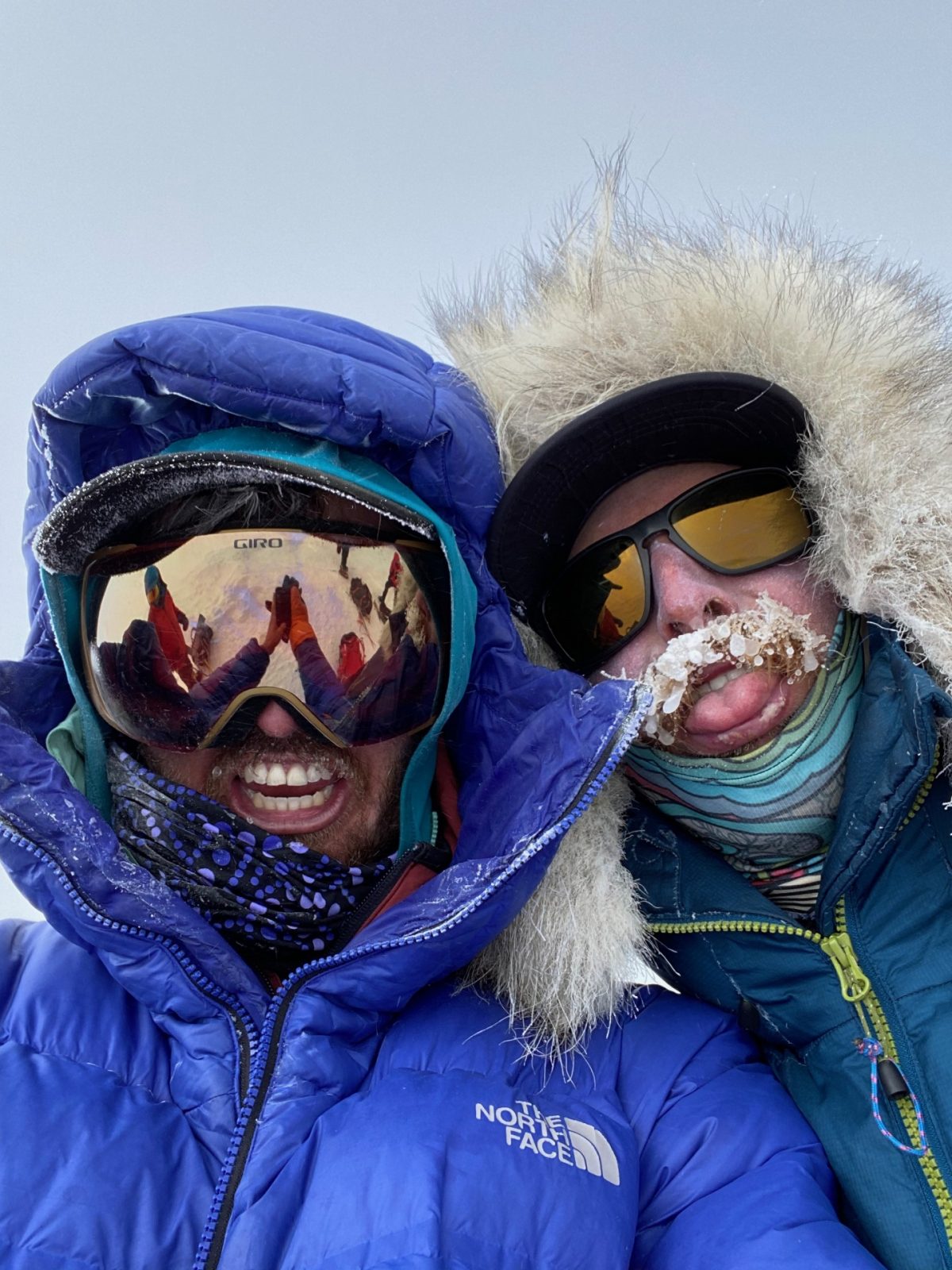
Although unconfirmed, the author on the left exudes pure joy — It must be the pack. If attempting the West Buttress, choose a pack wisely.
Conclusion
There is no denying that 100L packs are a small niche within the niche of backcountry skiing, mountaineering, gear blogs, etc. For a trip like Denali, however, a huge pack like this is not only required gear but also critical that it works well for comfort and reliability— the expedition’s success may depend on it.
Depending on the options you choose for an Unaweep 6300, the base price is $519.00. The Unaweep 6300 page shows the additional cost for each add-on.
The Unaweep 6300 Specs from Seek Outside
You can find all the specs and features at Seek Outside
— Shipped Weight UltraPE 400: 3 lbs 5 oz
— Minimum Weights (remove cross stay, minimum compression), UltraPE 400: 3 lbs 0 oz, Side Zipper adds 2-3 oz
— Volume
Packbag – 6300 cubic inches | 103 L
Base Talon – 800 cubic inches | 13 L
Mesh Talon – 1000 cubic inches | 16 L
Merlin – 1400 cubic inches | 23 L
Side pockets – two nalgenes each
— Field Adjustable Frame Height
24” frame for light to moderate loads
26” frame for moderate to heavy loads
28” frame for heavy loads or long torsos.
Quick tool-less field adjustment: via Frame Extensions.
Gavin is a mountain guide and gear fanatic based in Jackson, WY. His endless pursuit of gear perfection led to starting a pack company, Apocalypse Equipment in 2019. He has a degree in Nordic skiing and mechanical engineering from the University of New Hampshire and worked as a ski shop tech prior to getting his dream job as a WildSnow contributor.

